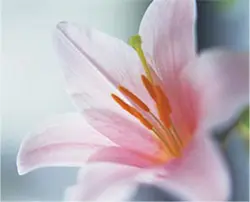
A Symphony of Color and Fragrance
Lilies, belonging to the genus Lilium, are distinguished by their bulbous growth and large, typically trumpet-shaped flowers. These flowers, known for their variety of colors and delightful fragrance, encompass several varieties like the Alpine lily, Calla lily, Easter lily, and Mariposa lily, each with its unique charm and characteristics.
Cultural Lore and Culinary Arts
The lily holds a special place in biblical lore, where it is said to have grown in Gethsemane following Christ’s death. This flower’s significance extends beyond its symbolic meanings; in China, certain lily species are grown as root vegetables, while in Japan, lily root is a cherished ingredient in dishes like chawan-mushi, a savory egg custard.
Healing Essence: A Diverse Range of Benefits
Each variety of lily offers distinct therapeutic benefits through its flower essence. Alpine lily aids women in integrating their feminine identities and remaining grounded. Calla lily essence is known for expanding perceptions of sexual identity and is particularly effective when shared with a partner. Easter lily essence addresses the balance between sexuality and spirituality. Mariposa lily essence offers a nurturing touch, healing feelings of separation and bringing comfort, joy, and a sense of freedom.
The world of lilies is not just about aesthetic appeal; these flowers also carry deep cultural and therapeutic significance. From the biblical gardens to modern natural remedies, lilies symbolize a blend of beauty, diversity, and healing, resonating across various aspects of human life and spirituality.
